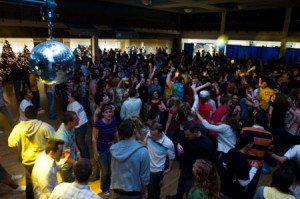
Some Latter-day Saints always seem to be running on a different time standard than others, but Mormons are not the only ones to create a cultural canon around continually arriving late.
Sharon Antonetti, Catholic author of a how-to article called “Get Me to the Church on Time,” described the stress of making it on time to Mass each week before the opening song. “The first key to making it to Mass on time is knowing what Mass is best for your family to attend … we set the cell phone alarms to go off 30 minutes prior to the planned Mass on the weekend,” Antonetti wrote.
Antonetti isn’t the only one who worries about arriving late to important events. She wrote her article to help others who have trouble with punctuality.
According to MormonWiki, “Because LDS people are busy, many are known to be punctuality-impaired. Mormon Standard Time does not have an exact meaning but nevertheless is sometimes taken to mean 15 or 30 minutes after the normal start time of an event.”
Mormon Standard Time has become a spinoff of Mountain Standard Time, which includes Utah. Generally, American Latter-day Saints begin meetings on time, so arriving late may be societal or linked to certain personality types.
A sociology professor, Steve Bahr, doesn’t believe the phenomenon is as widespread as some claim. “I have lived in Washington, North Dakota, North Carolina and Texas and interacted with many non-Mormons regularly in those states and attended many different types of parties, gatherings and meetings, and I haven’t noticed that Mormons are any later than anyone else,” he said.
Brennan Staheli, a junior studying accounting, leads the event planning for BYU Student Alumni and also believes being late is not a tendency specific to LDS culture.
“I don’t know if (arriving late) has anything to do with cultural Mormonism, to be honest,” Staheli said. “I think that it might just be a general societal thing. ‘Fashionably late’ is not a term that just comes from us (Latter-day Saints). It’s just a term.”

So why do some people show up late and others arrive early?
“It’s a little bit less social pressure,” Staheli said. “If you go and you feel like there are few people there, you feel like you need to make conversation, whereas if you go and there is a huge crowd there already, you can just blend in with the crowd.”
Leah Lehmuller, vice president of activities for BYUSA, said people think it’s “cool” to be fashionably late. It’s a trend she sees regularly on campus.
“Our generation is getting busier and busier by the second, and that’s likely something that is going to keep Mormon Standard Time a trend for years to come,” she said.
Some aspects of BYUSA events are planned according to when students will typically arrive.
“When we had Comedy Sports perform at the Fall Fest this year, we scheduled the first performance for 30 minutes after the other activities started,” Lehmuller said.
BYUSA uses time tactics like this because its officers assume students won’t arrive on time, and they want to have a full room for a performance.
When BYUSA wants students to arrive on time, Lehmuller said, they implement “event planning techniques to try to work around things like Mormon Standard Time.”
BYUSA often provides incentives for a certain number of students who arrive first, in order to encourage punctuality and a full house.
For example, the Rollins Center hosted Entrepreneurship Week in September. The first kickoff event was held in the JSB, and the first 200 people through the door received a free t-shirt.
For student alumni events, Staheli prepares to have everybody show up at the beginning. Staheli compared students arriving to an event to an exponential graph. Students arrive in a slow trickle at first and then show up in a critical mass, in line with the Mormon Standard Time trend.




